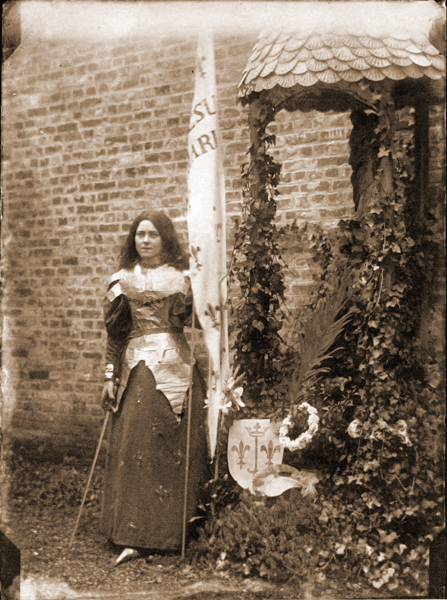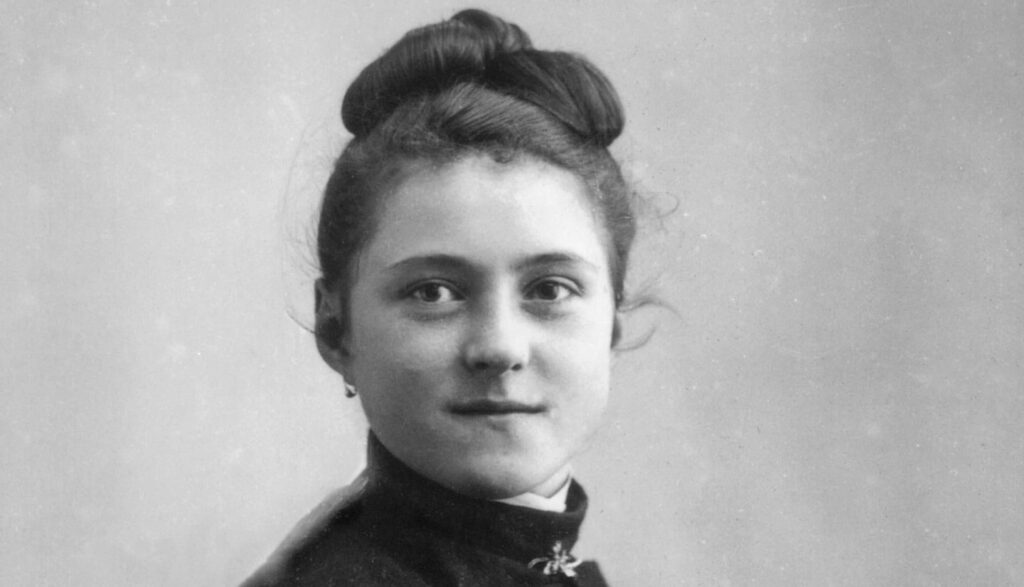
St. Therese of Lisieux and her little way was the theme of my annual retreat last week. It gave me insight into her spirituality that made her the most popular saint of the modern world. I’ll share some salient points, but first a brief bio.
St. Therese’s Short Life
St. Therese was the youngest of four girls born to Zelie and Louis Martin. Zelie died when Therese was four and a half, so her oldest sister, Pauline became like a mother to her. As a child, she was pampered, given to tantrums, and often ill. During one sickness, she believed she was cured when Mary smiled on her.
From the age of nine, she desired to become a Carmelite nun. When she was fourteen, Therese applied to the convent but was told she was too young. During a visit to the Holy Father, she begged his permission to enter, but he only said to listen to the superiors. Still, she was able to join the nuns at the age of fifteen. She took the name Sister Therese of the Child Jesus and of the Holy Face.

Therese wrote prayers, poems, and plays. At the request of her superiors, she wrote the story of her life and an explanation of her simple spirituality, termed “the little way.” This was published as The Story of a Soul, which became a best seller.
She viewed her vocation as being Love, praying for sinners and for priests.
Therese endured excruciating physical suffering from tuberculosis without being allowed morphine. She also suffered from a dark night of the soul (tortured by thinking God and heaven did not exist). Before dying at the age of twenty-four in 1897, she promised to spend her heaven letting a shower of roses fall on earth. She was canonized in 1924.

Her Spirituality
Some people are turned off by Therese’s “flowery” language and judge her as too sentimental for them. However her life and her teachings are a sound and sure path to sanctity. At heart, there is nothing easy about them. She did not experience ecstasies, visions, and other extraordinary graces.
Therese focused on God’s merciful love. No matter how weak and flawed she was, she knew God would always surround her with love and forgive her.
She realized she would never achieve great things for God like a martyr or a doctor of the Church, but she did little things for him, which required a great deal of discipline. For example, when the Sister doing laundry beside her splashed her with dirty water, Therese refrained from rebuking her. When a grumpy Sister who naturally repelled Therese constantly criticized her and complained, the saint was so loving toward her that the Sister asked, “What about me makes me so attractive to you?”
Therese said to God, “I choose all [that you will]. I do not want to be a saint by halves.”
Therese used metaphors to describe her life. As a former English teacher, I enjoyed this. Here are a few:
A Little Flower
Considering that she would not do outstanding things for God, Therese likened herself to a little flower. She reasoned that every flower had its own gifts, its own beauty. If the world had nothing but roses or lilies, it would be deprived of the tiny, dainty flowers that have their own loveliness and perfume. Likewise, people differ and give God praise by being the best they can be. She understood that “Jesus does not ask for great actions but only abandonment and gratitude.”
An Elevator
To attain union with God, an arduous journey is usually required like that of a missionary or a great preacher. Therese relied on God to do the work of her perfection. She wrote she wanted him to be like an elevator, taking her up to him.


A Little Bird
A young bird can’t fly yet. Compared to a soaring eagle, it is helpless. Similarly, Therese viewed herself like this bird. She needed God’s power and grace to live well. She abandoned herself to him.
Some Words of Saint Therese
I haven’t been a great fan of this little saint, but curiously this year someone gave me a medal with her relic inserted. That and her book and scads of handouts from the retreat suggest that I make her my friend in heaven.
“I ask Jesus to draw me into the flames of His love. to unite me so closely to him that he live an act in me.”
“We can never have too much confidence in the good God who is so powerful and so merciful. We obtain from him as much as we hope for.”
“Ah! I understand now that charity consists in bearing with the faults of others, in not being surprised at their weakness, in being edified by the smallest acts of virtue we see them practice.”
“Though you have the seraphim in your heavenly court, you still seek my love.”
“He finds few hearts who surrender to him without reservations, who understand the real tenderness of his infinite Love.”
Trivia about St. Therese
Both Therese’s parents are also canonized saints. During the last years of her father’s life, he suffered from dementia.
Therese’s three sisters also entered Carmel.
St. Teresa of Calcutta is named for this little Therese, not the big Teresa of Avila.
After Therese prayed for a sinner on death row, she read in a newspaper that before he was guillotined, he took a priest’s crucifix and kissed it.
To look older when she asked the Pope for permission to enter Carmel, she put up her hair.

Prayers to St. Therese
As a child you might have prayed, “Little Flower in this hour show your power.” Here is a prayer that’s a little longer:
• Have you ever received “a rose” from Saint Therese?
• Therese said, “Never have I heard him speak, but I feel that he is within me at each moment; he is guiding and inspiring me with what I must say and do.” Have you ever sensed God’s guidance in a striking way?
• “There are souls for whom his mercy never tires of waiting.” What people in need of conversion are you praying for?









6 Responses
Thank you Sr.
Just beautiful , to meditate upon. God bless.mt.
Ah, your patron saint. She is amazing.
Sometimes in life, it’s the little things in it that have the most meaning. Like little kindnesses.
Exactly right, Rita!
I have several roses from her in the past. Time to renew that prayer.
Great idea, Mary Ellen!